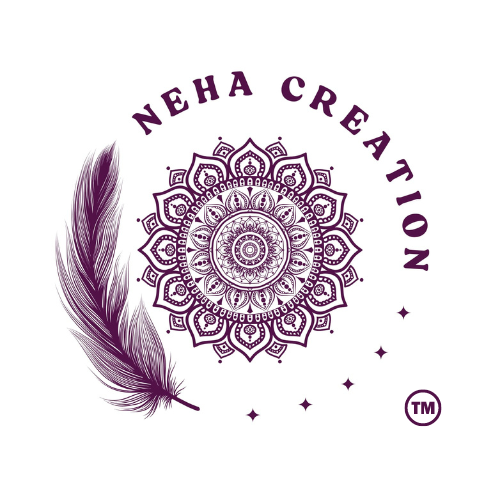Introduction
Mandalas are more than just beautiful patterns—they are powerful tools for self-expression, relaxation, and learning, especially for children. The word “mandala” originates from Sanskrit, meaning “circle.” These intricate designs, often used in spiritual and cultural traditions, offer a unique blend of art, mindfulness, and cognitive development. In today’s fast-paced digital world, mandalas for kids can play a vital role in supporting emotional well-being, enhancing creativity, and encouraging mindful focus.
If you’re a parent, teacher, or caregiver searching for creative activities for kids or looking for the best art therapy tools for children, mandala art can be a game-changer.
What Are Mandalas?
Mandalas are circular geometric patterns that often symbolize the universe, unity, and harmony. Traditionally used in Buddhist and Hindu cultures for meditation, mandalas have found their way into modern education and therapy as tools to enhance focus, creativity, and mindfulness in children.
1. Boosts Creativity and Imagination
Children have vivid imaginations, and mandala drawing for kids can spark new ideas. Whether they use pre-drawn mandala coloring pages or design their own from scratch, this process encourages them to choose colors, shapes, and patterns independently.
Benefits:
-
Helps kids express themselves through art
-
Enhances their color recognition and coordination
-
Encourages innovative thinking and visual storytelling
💡 Pro Tip: Use themed mandalas like nature, animals, or space to combine creativity with learning!
2. Develops Focus and Concentration
One of the most recognized benefits of mandala art is its calming effect. When kids engage in mandala coloring, they focus on intricate details and patterns, promoting extended periods of attention.
Why It Works:
-
Slows down the mind
-
Helps hyperactive or easily distracted children focus
-
Enhances hand-eye coordination
🧠 Did You Know? Mandala activities are often used in classrooms to help students settle down after recess or before tests.
3. Supports Emotional Regulation and Mindfulness
Children often struggle to understand or express their emotions. Mandala coloring for kids acts like a mindfulness practice, helping them become aware of their inner world while staying calm and present.
Emotional Benefits:
-
Reduces anxiety and stress
-
Helps children feel more grounded and balanced
-
Provides a non-verbal way to release emotions
🌈 Activity Idea: Ask your child to choose colors based on how they’re feeling. This helps build emotional awareness and vocabulary.
4. Enhances Fine Motor Skills
Filling in intricate patterns within a mandala requires precision and control, which aids in developing fine motor skills—an essential part of early childhood development.
Developmental Benefits:
-
Strengthens hand muscles
-
Improves pencil grip and control
-
Prepares children for writing and drawing tasks
This makes mandala art for preschoolers a fun and educational way to improve physical coordination.
5. Encourages Self-Expression and Confidence
Every mandala a child creates is unique. There’s no “right” or “wrong” in mandala art. This freedom allows children to express their individuality and build confidence in their artistic choices.
Psychological Benefits:
-
Boosts self-esteem
-
Encourages decision-making through color and design selection
-
Helps shy or introverted kids express themselves non-verbally
⭐ Parent Tip: Celebrate your child’s mandala art by displaying it on the fridge or wall—it boosts their self-worth!
6. Builds Patience and Perseverance
Creating a mandala, especially a detailed one, requires time and effort. This teaches children the value of patience, perseverance, and delayed gratification—all critical life skills.
Learning Outcomes:
-
Helps children stay committed to a task
-
Teaches them to handle challenges calmly
-
Builds a growth mindset by rewarding effort over perfection
7. Educational Mandalas for Cross-Learning
Mandalas can be combined with subjects like math, geography, and science to create interactive learning activities.
Examples:
-
Use symmetry in mandalas to teach geometry
-
Create nature-themed mandalas to learn about animals, plants, or ecosystems
-
Introduce cultural mandalas from around the world for geography lessons
🎓 Teacher Tip: Incorporate mandalas in classroom lesson plans to make learning more engaging and hands-on.
8. A Screen-Free, Engaging Hobby
In a world dominated by digital devices, mandala art for kids provides a healthy, screen-free alternative that nurtures their brains and hearts.
Screen-Free Benefits:
-
Reduces screen fatigue
-
Supports better sleep cycles and eye health
-
Enhances imagination in a tactile, real-world way
💖 Fun Fact: Mandalas are great for group activities too—host a mandala day with friends or at school!
How to Introduce Mandalas to Your Kids
1. Start Simple
Begin with basic, large-patterned mandalas suitable for young children. You can find many free printable mandala coloring pages for kids online.
2. Use the Right Tools
Provide child-safe crayons, colored pencils, or washable markers.
3. Incorporate Themes
Add fun by choosing themes your child loves—animals, unicorns, space, underwater, or holidays.
4. Encourage Creation
As kids grow more confident, introduce blank mandala templates or let them draw their own from scratch.
Recommended Mandala Resources for Kids
-
Mandala Coloring Books for Kids (Age 4-10)
-
DIY Mandala Kits for Kids
-
Online Mandala Courses for Children
-
Printable Mandala Worksheets for Teachers
These resources are available from platforms like Neha Creation Mandala Store, Amazon, or your local bookstore.
Final Thoughts
Mandalas are not just art—they are healing, creative, and empowering tools that support every aspect of a child’s growth. By introducing mandala art to kids, you’re giving them a way to calm their minds, express their feelings, and build essential life skills.
Whether you're a parent looking for a mindful activity, a teacher seeking classroom tools, or a therapist exploring non-verbal outlets for emotions, mandalas are a gentle and effective solution. Encourage your child today with the joyful magic of mandalas—one circle at a time!

